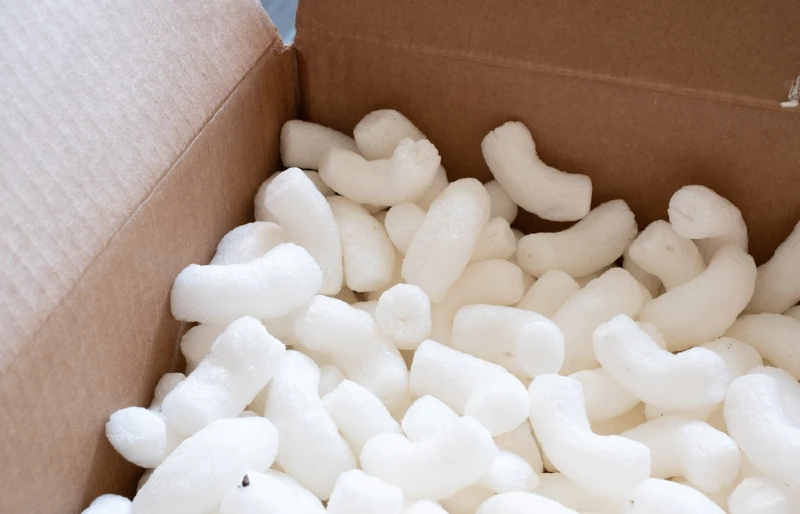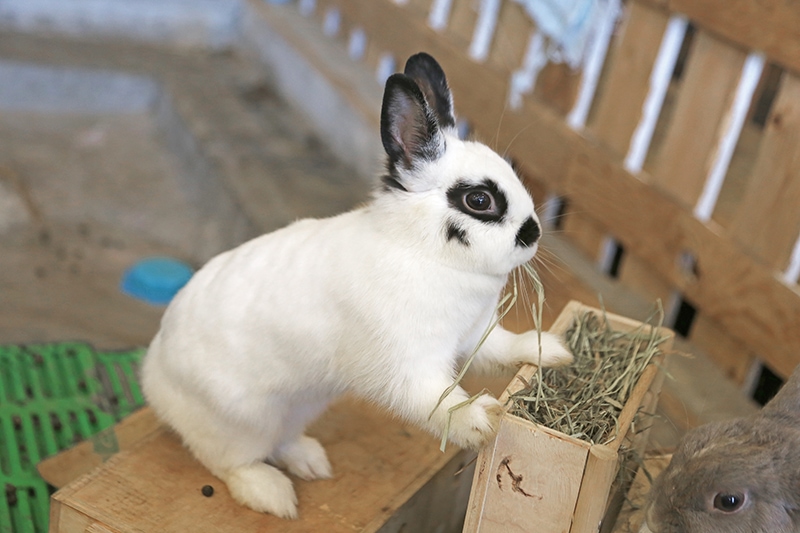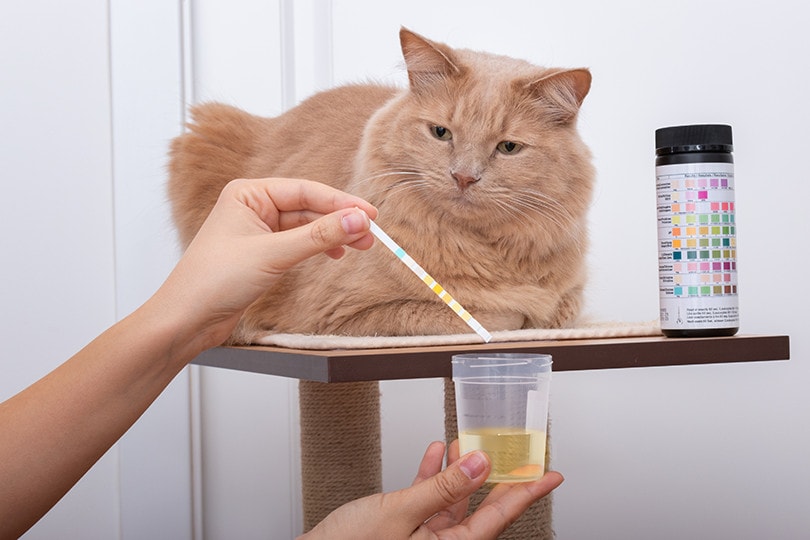How Do Vets Spay Cats: Learning From The Experts (Vet Answer)
Updated on
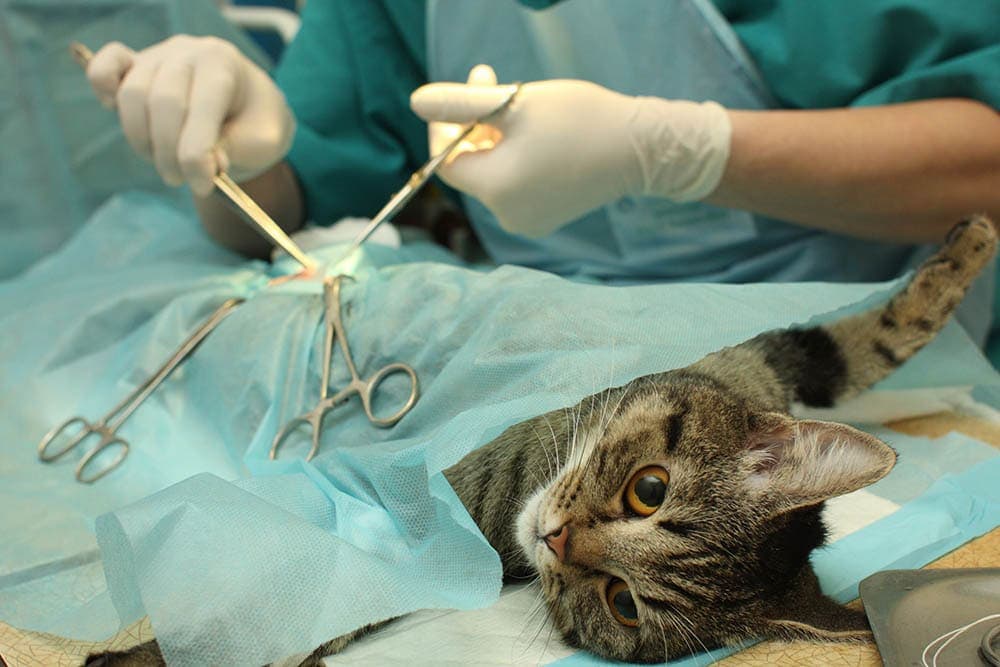
Neutering cats is one of the most common surgical procedures that small animal veterinarians perform. For female animals, neutering is often referred to as “spaying” and for males, it is “castration” – in both cases, it involves the removal of the reproductive organs so that the animal can no longer reproduce.
What Happens When a Cat Is Spayed?
The spay operation involves removing the female reproductive organs under a general anesthetic. There are many different anesthetic combinations available, and choice will depend heavily on the clinic’s preference and the specifics of each patient. After the anesthetic is administered, the veterinarian will make a small incision to enter the abdomen. This can be done on the left side (flank approach) of the cat, or underneath the belly just below the belly button (midline approach).
Once in the abdomen, the surgeon will locate the ovaries, and use a stitch to tie off both ovaries from their blood supply. Another stitch is then placed at the base of the uterus (at the level of the cervix or just above it). The ovaries and uterus are then removed. The abdomen is then stitched closed, and the skin closed over the top. Most cats recover well and will go home on the same day.
The approach (either flank or midline) is largely down to the preference of your surgeon. Flank procedures are thought to heal faster and be less painful, but midline approaches allow easier access to the abdomen. For fancy or showing breeds, midline may be preferable as the scar will not affect hair growth or patterning on the visible side of the cat.
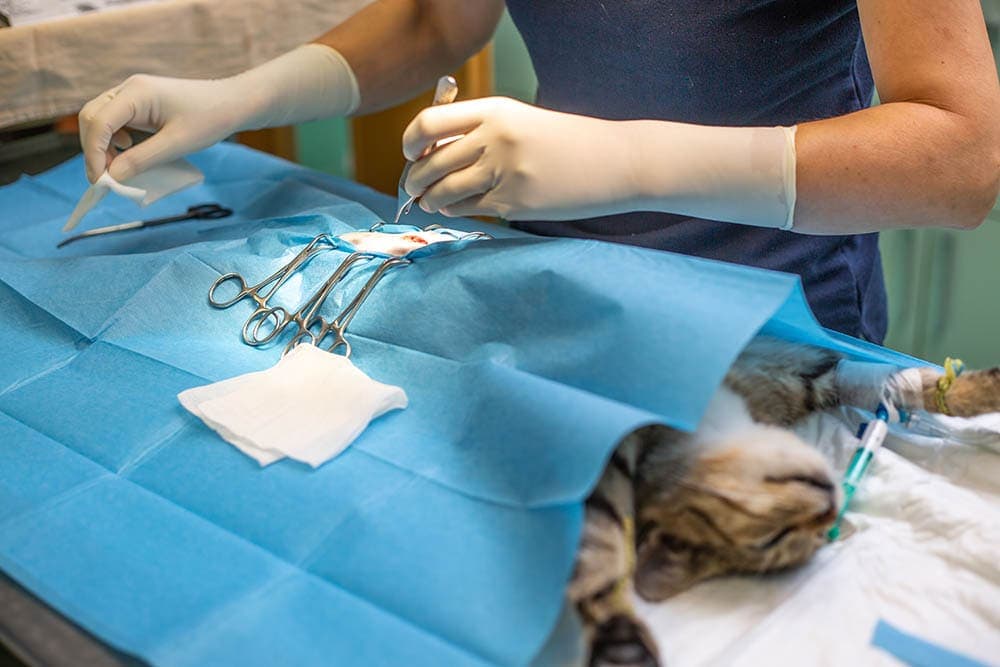
Are the Cat’s Ovaries Removed?
Some veterinarians choose only to remove the ovaries, rather than the uterus as well. This is becoming increasingly common in dogs and is what happens when dogs or cats are neutered by keyhole (‘laparoscopic’) procedures rather than the traditional surgical methods described above. Removal of the ovaries achieves the same outcome, as far as we know, but the benefits in cats are less clear than in dogs and so most veterinarians still chose to remove the uterus as well. If there are any abnormalities of the uterus (pregnancy, tumors, infection) then the uterus must be removed in any case.
How Long Does It Take a Cat to Recover After Being Spayed?
Most cats heal very quickly after their neutering operation and with minimal complications. Full recovery usually takes about two weeks.
Your veterinary clinic will advise that your cat is kept inside and rested (as much as possible!) for about 7 to 10 days after the procedure. This is vital to allow the wounds, both internal and external, to heal. Typically, recovering from the anesthetic drugs takes about 24 hours, and in most cases, the biggest problem after this is keeping your cat calm and quiet! Depending on the surgeon, some cats may have stitches to remove after about 7 days, whereas in other cases the stitches may be dissolvable. In most cases, cats should not need antibiotics after this procedure, and will likely have pain relief given by the veterinarian as well as pain relief to come home with.
Although some cats do not pay much attention to their stitches, your clinic may advise that your cat has an Elizabethan collar (a cone) or a pet shirt to wear for the week after the operation. Animals can tear all their stitches out so you must be alert to this and ensure that the surgical site is left alone. Licking and chewing can also increase the risk of wound infection. If you have any concerns about your cat during their recovery, especially if they become quiet, painful, or lethargic, then you should contact your veterinary clinic as soon as possible.
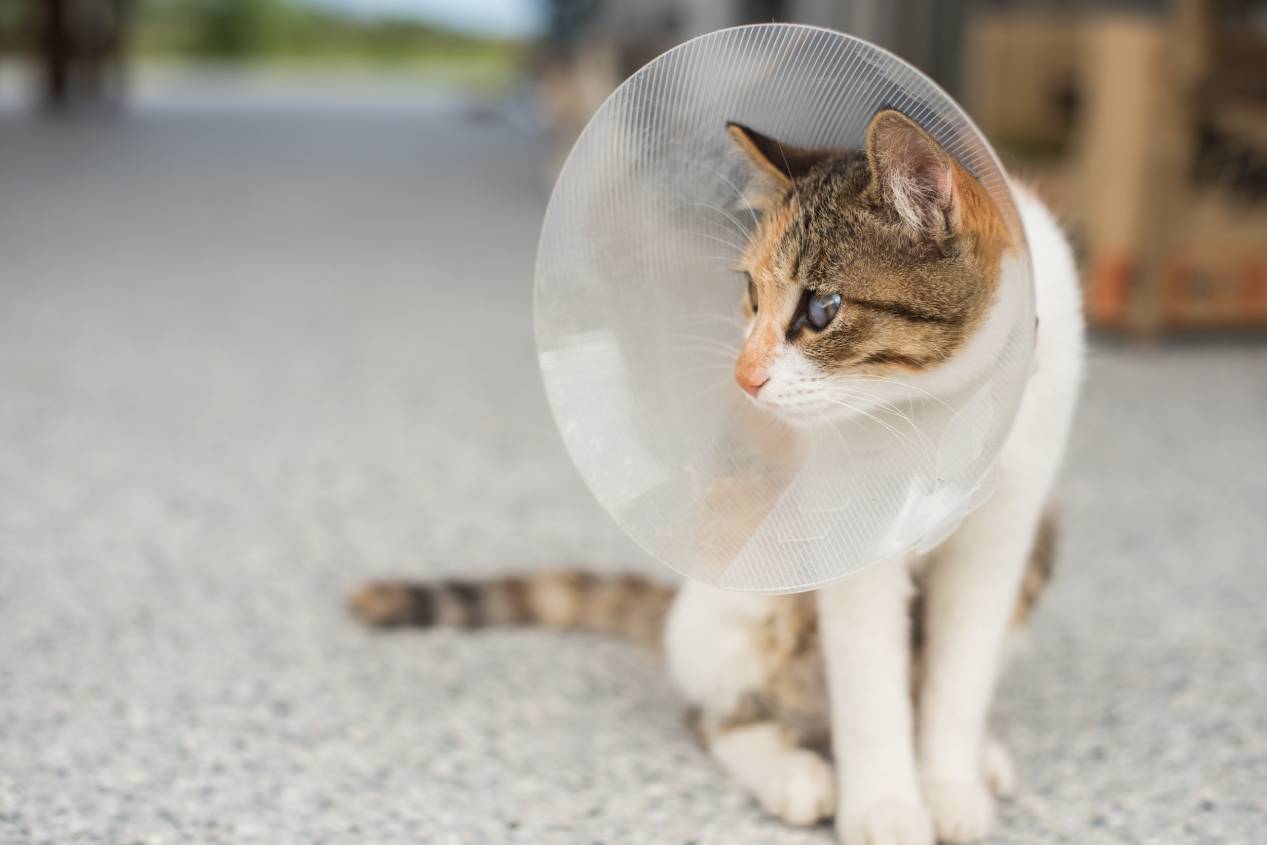
How Old Does My Cat Have to Be for Neutering or Spaying?
Most veterinary clinics traditionally recommended that kittens are spayed at about six months old. We now know this is probably too late and so kittens are now regularly spayed and castrated at four months old. Some rescue organizations dealing with feral kittens will perform the procedure at three months old.
Cats can be safely spayed about 6 weeks after pregnancy. They can also be spayed while pregnant (and this is not uncommon in rescue or feral cats), although this does carry a slightly higher risk of bleeding as the blood vessels are larger.
Should I Have My Cat Neutered or Spayed?
Neutering is seen as an essential procedure around the world in cats, as they are prolific breeders, and the number of cats can rapidly increase to an unsustainable level. This has knock-on effects for the cats themselves, as it may mean increased sharing of infectious diseases and a lack of resources (food) leading to fights, competition, and starvation. Feral or wild cats can also be a serious invasive problem in some eco-systems (remote islands, or the Australian outback, for example) where they will hunt and destroy native species very quickly. Controlling the number of cats is therefore good for both the environment and for the cats themselves.
- No risk of unexpected or unwanted kittens.
- No risk of ovarian or uterine cancers.
- A massive reduction in the risk of mammary (breast) cancer.
- No risk of uterus infections (“pyometra”) – which can be life-threatening.
- Reduced unwanted sexual behaviors such as spraying, and “calling” (being very vocal looking for a mate), which will happen when the cat comes into season – every three weeks!
What Are the Risks of Having My Cat Spayed?
All spay operations must involve a general anesthetic, and unfortunately, this always carries predictable and unpredictable risks, just as it does in humans.
Predictable risks are often associated with the tiny size of some kittens – such as balancing tiny doses of anesthetic drugs and becoming cold or low on blood sugar while under the anesthetic. Veterinary clinics are ever-increasingly alert to these concerns and are much better at reducing risks. The anesthetic agents used are also becoming safer, due to advances in modern medicine and increasing research into safe and effective drug combinations. Most cat patients presented for neutering are young and healthy and the operations can be well planned. Pre-existing conditions such as heart murmurs are usually uncommon and can be diagnosed before any surgery is performed.
Unpredictable risks are still a problem; any animal can suffer a complication under an anesthetic, and the biggest worries are damage to the heart or brain. Animals do die unexpectedly under anesthesia. Fortunately, these risks are extremely low and complications extremely rare. Studies in 2009 and 2012 suggested that about 0.1% of healthy patients were lost under anesthesia which works out to about one in a thousand. The overall benefits still outweigh the potential risks of neutering for most cats.
In general, the spay operation is routine and has a very low rate of significant surgical complications. As with any procedure, there are risks of bleeding and infection, although these are not common in cats. Very rarely, the tubes (ureters) from the kidneys to the bladder which run near the uterus can also be damaged during the procedure.
Note: Following video may contain images that could be considered graphic.
What Long-Term Effect Does Neutering or Spaying Have On My Cat?
Longer-term, there is no clear evidence to suggest that neutering has any long-term negative effects on cat health. This is much more clear-cut in cats than in dogs. All neutered animals tend to be less active due to the loss of sexual drive, and so are more likely to gain weight and become obese if fed an incorrect diet. This obesity can lead to problems, but it is entirely avoidable and not an inevitable consequence of neutering. There is a possible association between rare growth plate problems and neutering in some male cats, but this can also be explained by these cats being overweight.
Neutering is also unlikely to change a cat’s personality, although again this is hard to establish! One study looked at a group of feral cats and found that neutering reduced aggression and reduced activity levels, but otherwise had minimal effects on the cats themselves. Female cats may also be friendlier to strangers if they are spayed!
Spaying and neutering is an important part of pet care, but it's not the only health expense your pet is likely to incur. A personalized pet insurance plan from a company like Lemonade can help you manage costs and care for your pet at the same time.
Conclusion
Neutering or spaying is a common, essential surgical procedure for female cats worldwide. It is a safe, effective tool for population control, improving overall cat welfare, and improving the health of individual pet cats at home. It is routinely performed as a day patient procedure by small animal veterinarians. Although there are anesthetic and surgical risks to any operation, the potential benefits of neutering almost always outweigh the possible concerns. Neutering both male and female cats at a young age should be recommended in the vast majority of cases.
See also:
- World Spay Day: When Is It & How You Can Celebrate
- How Long Will It Take to Spay a Cat? Vet-Reviewed Facts
Featured Image Credit: De Visu, Shutterstock



